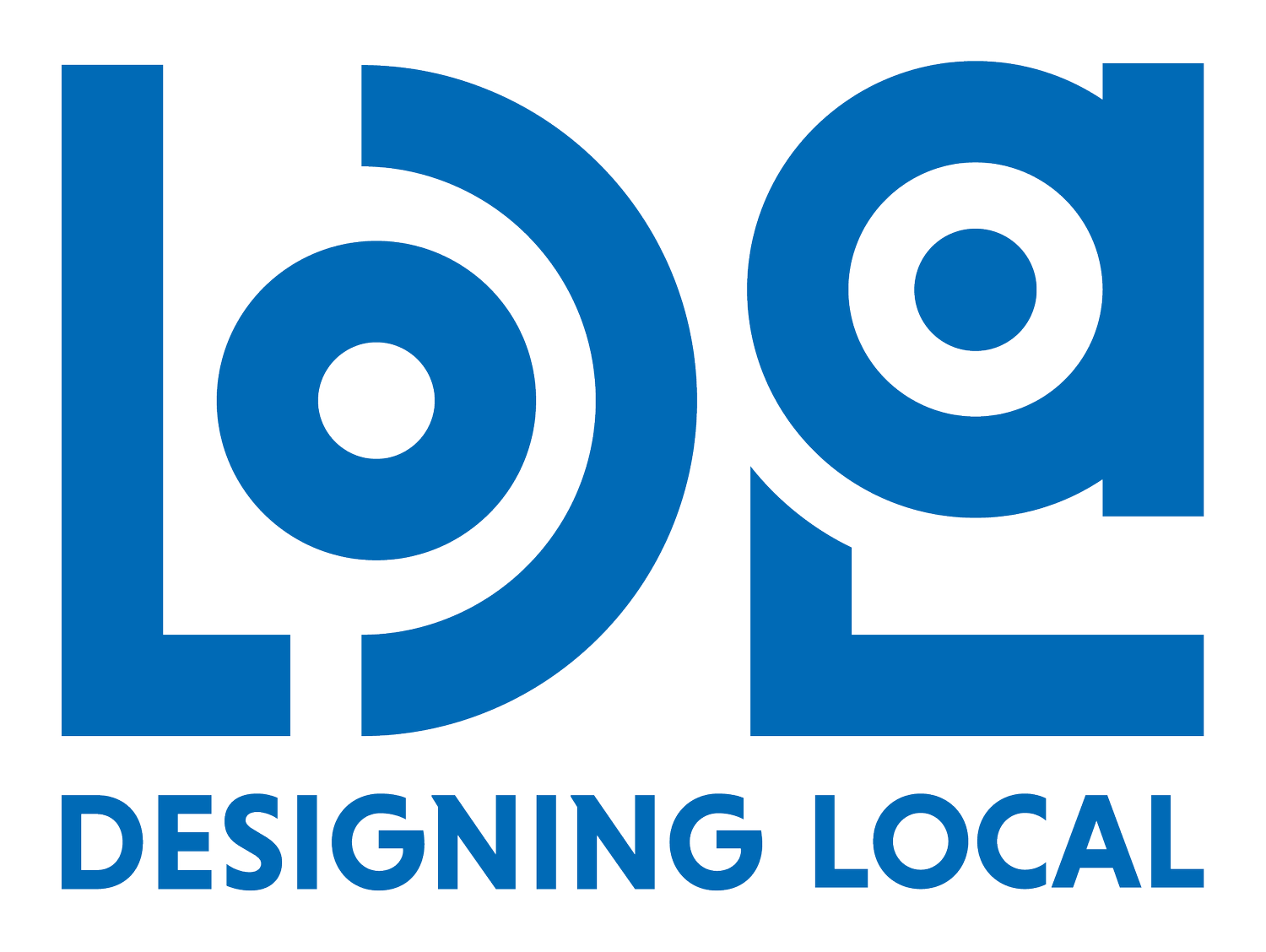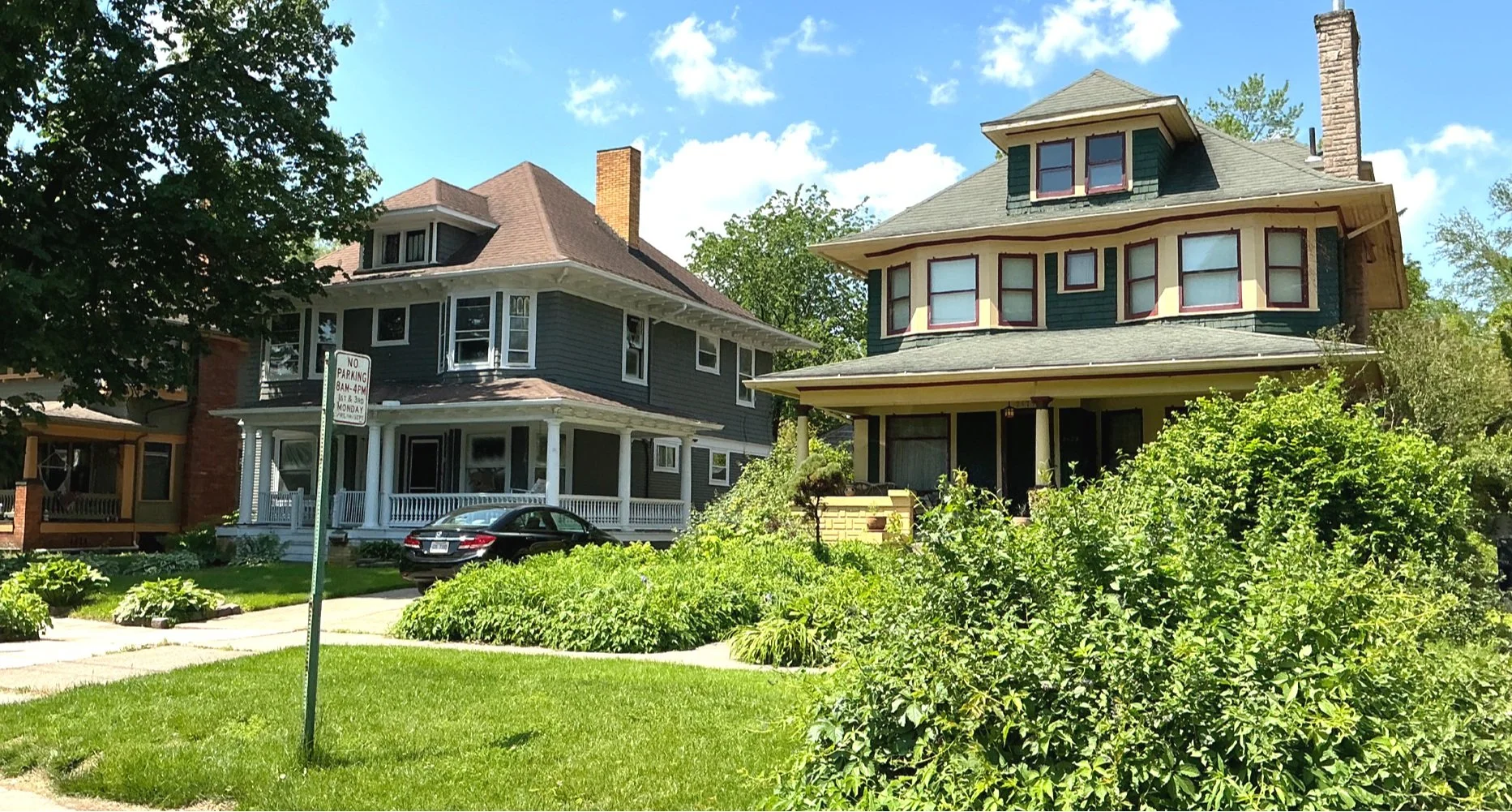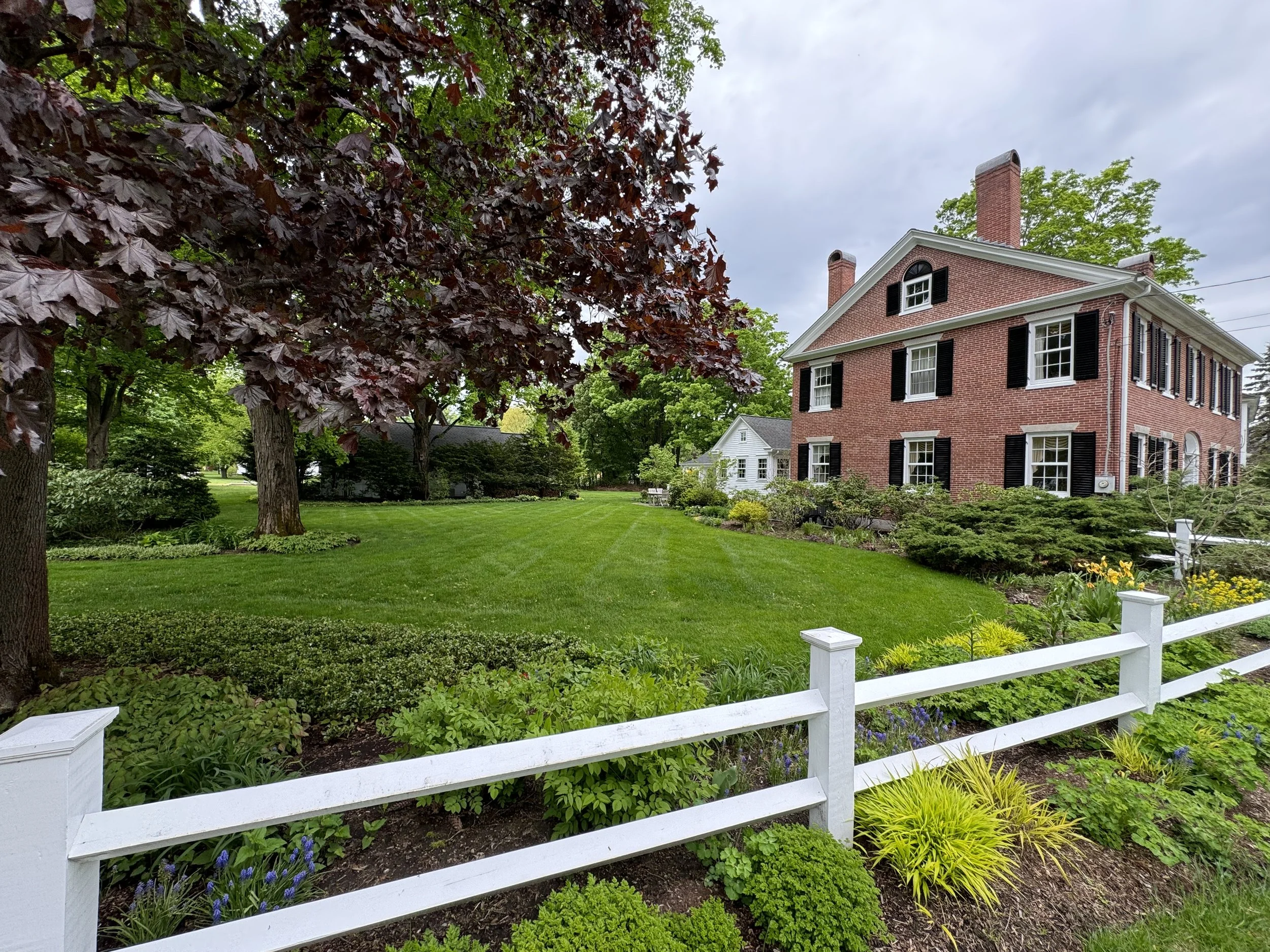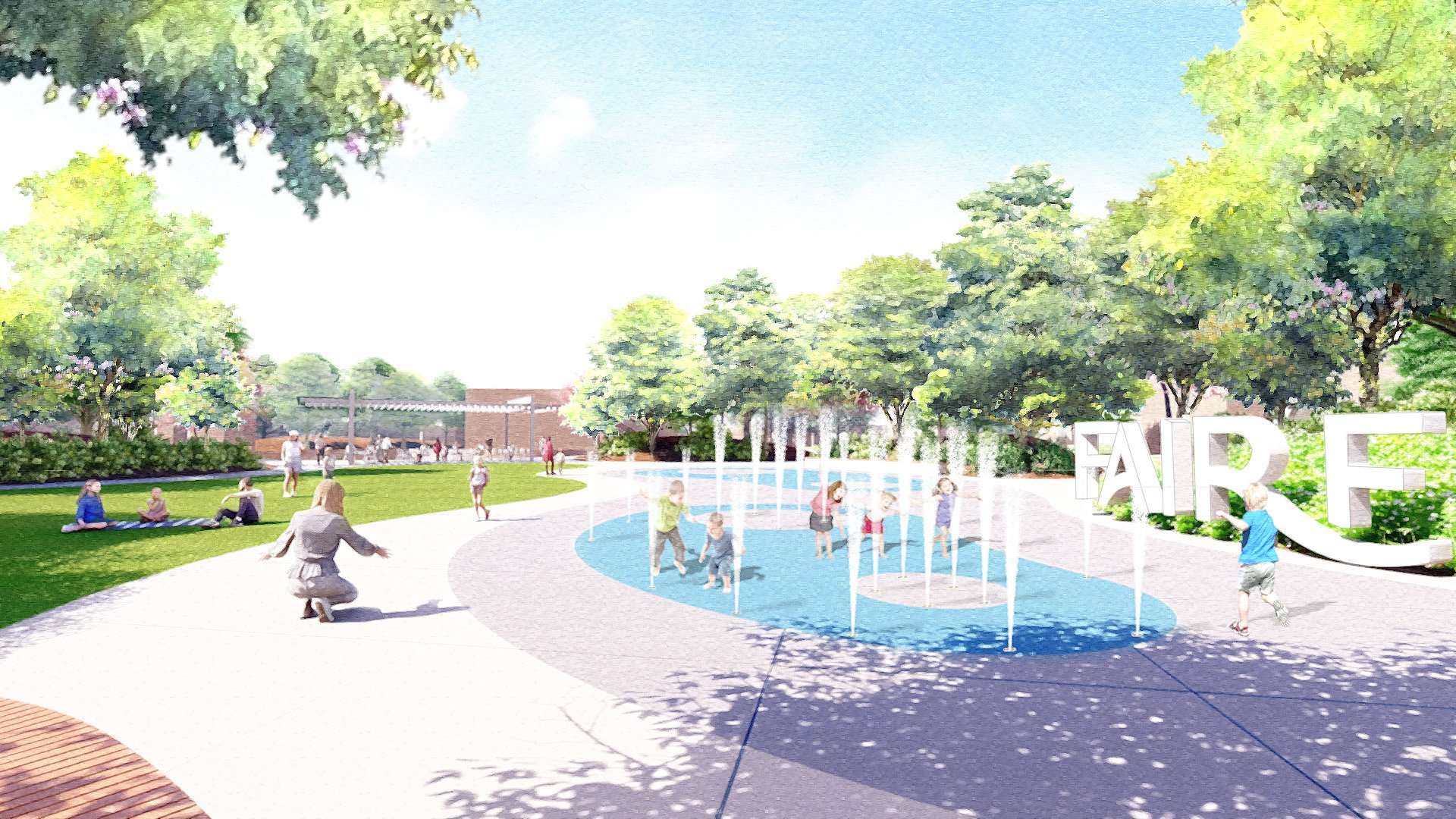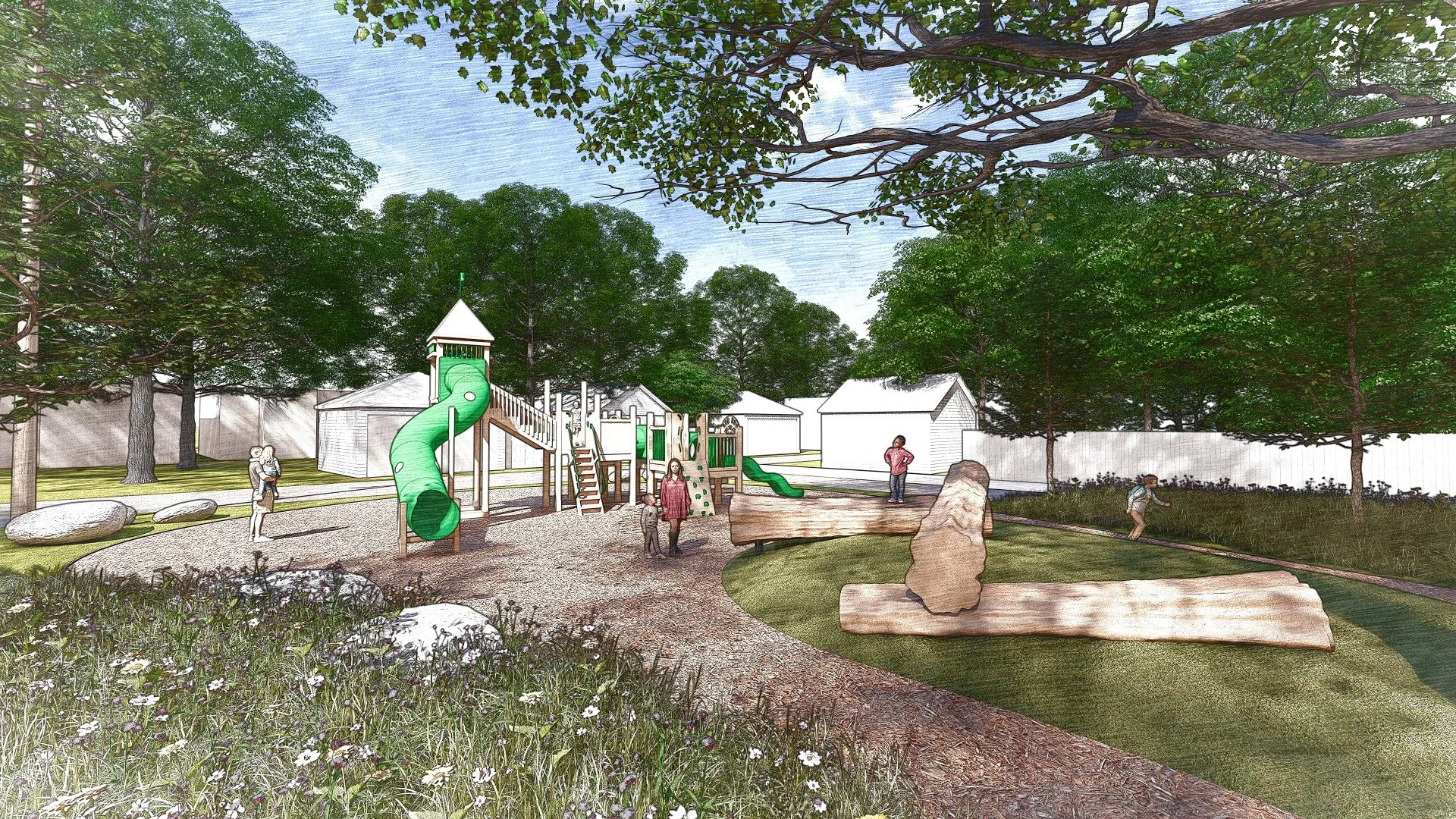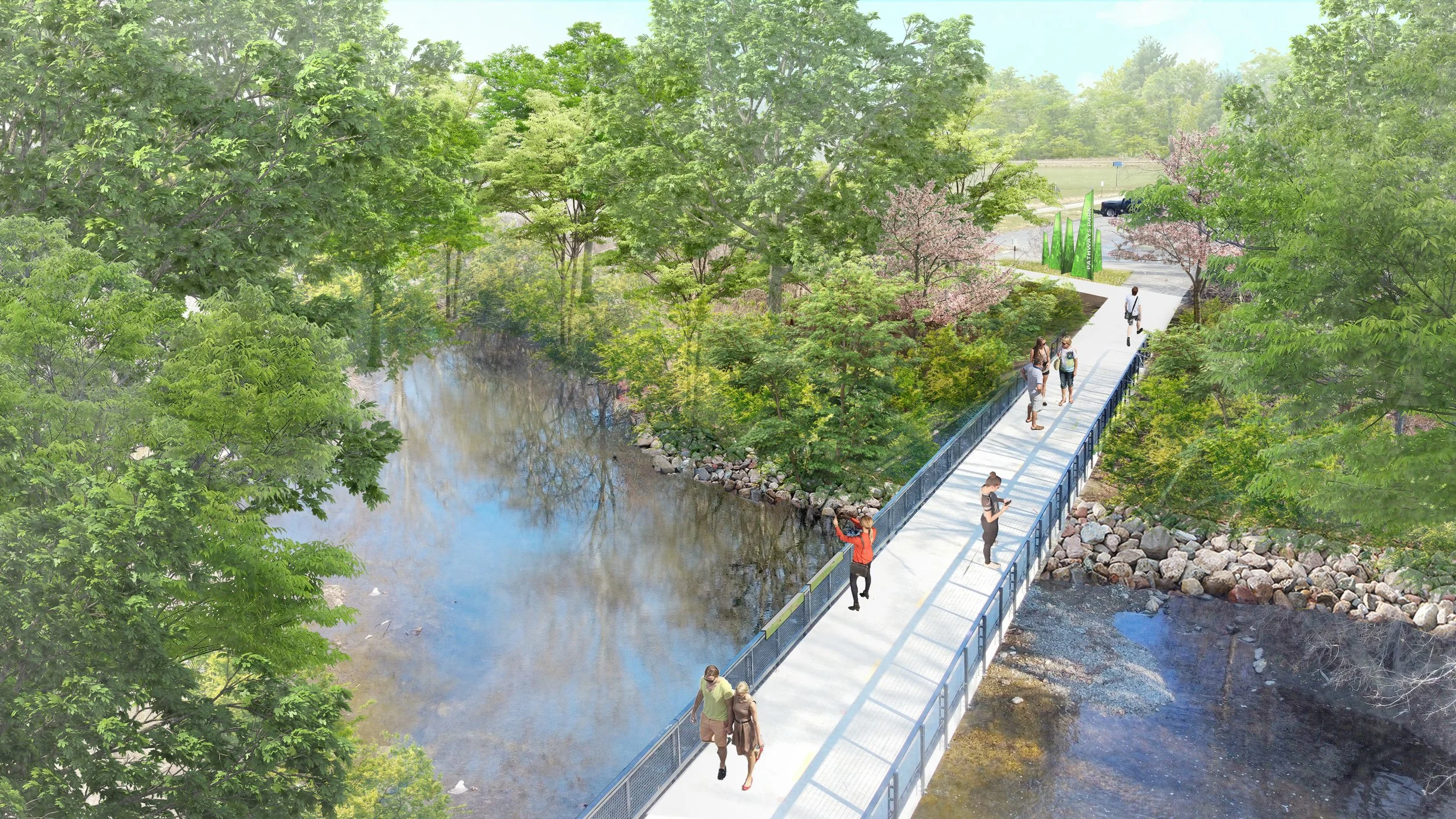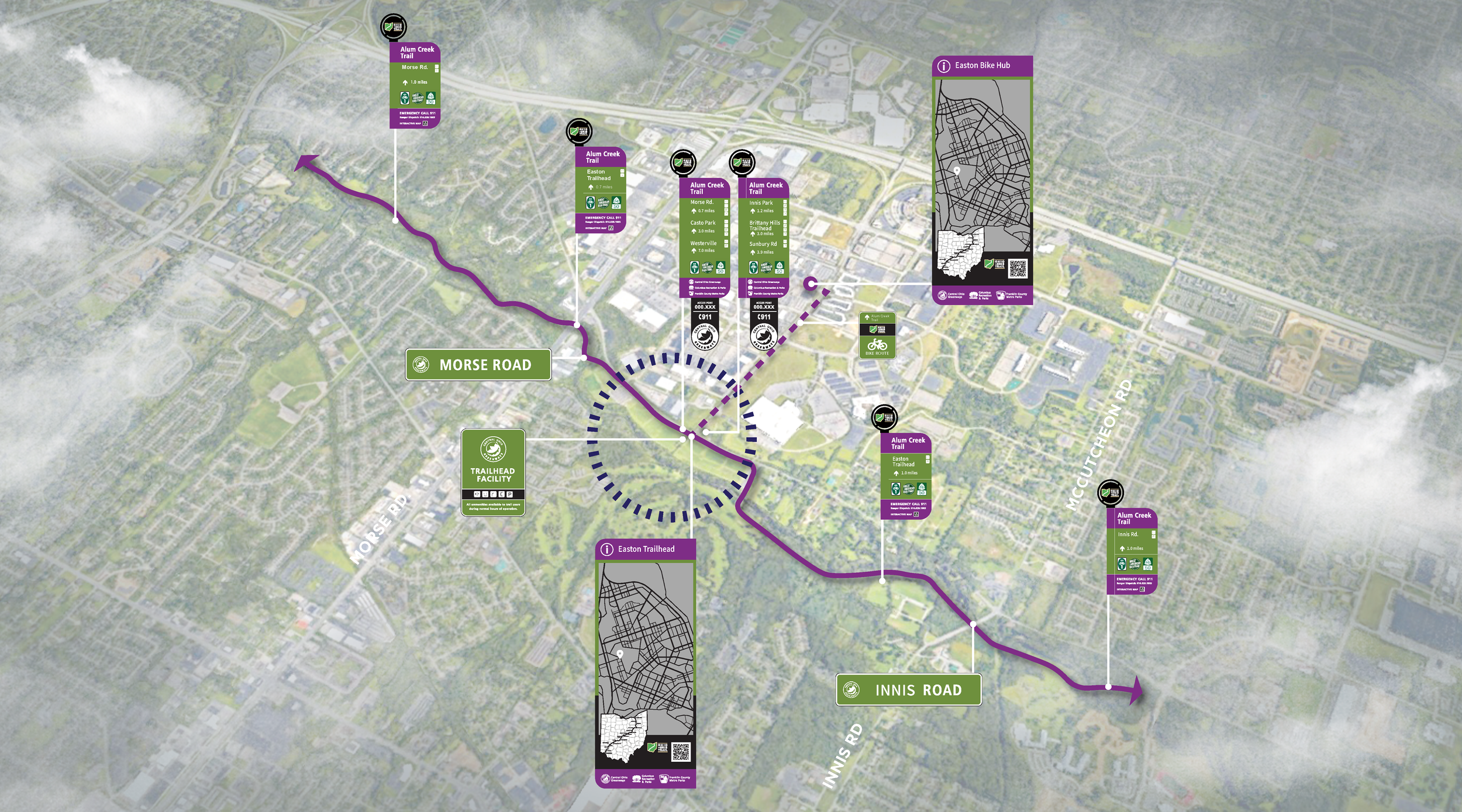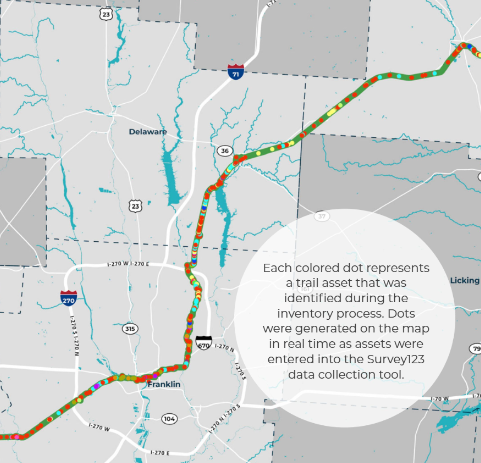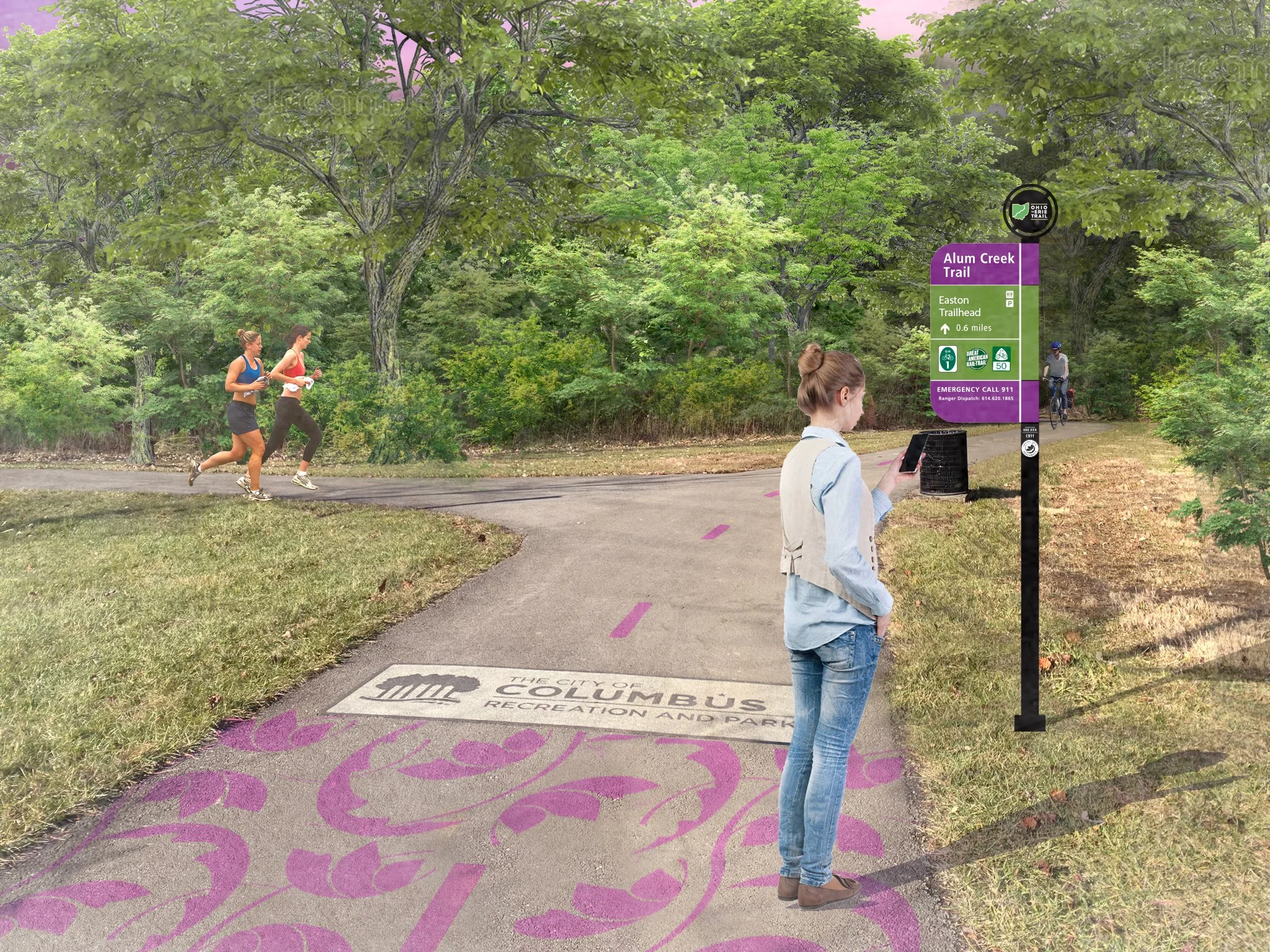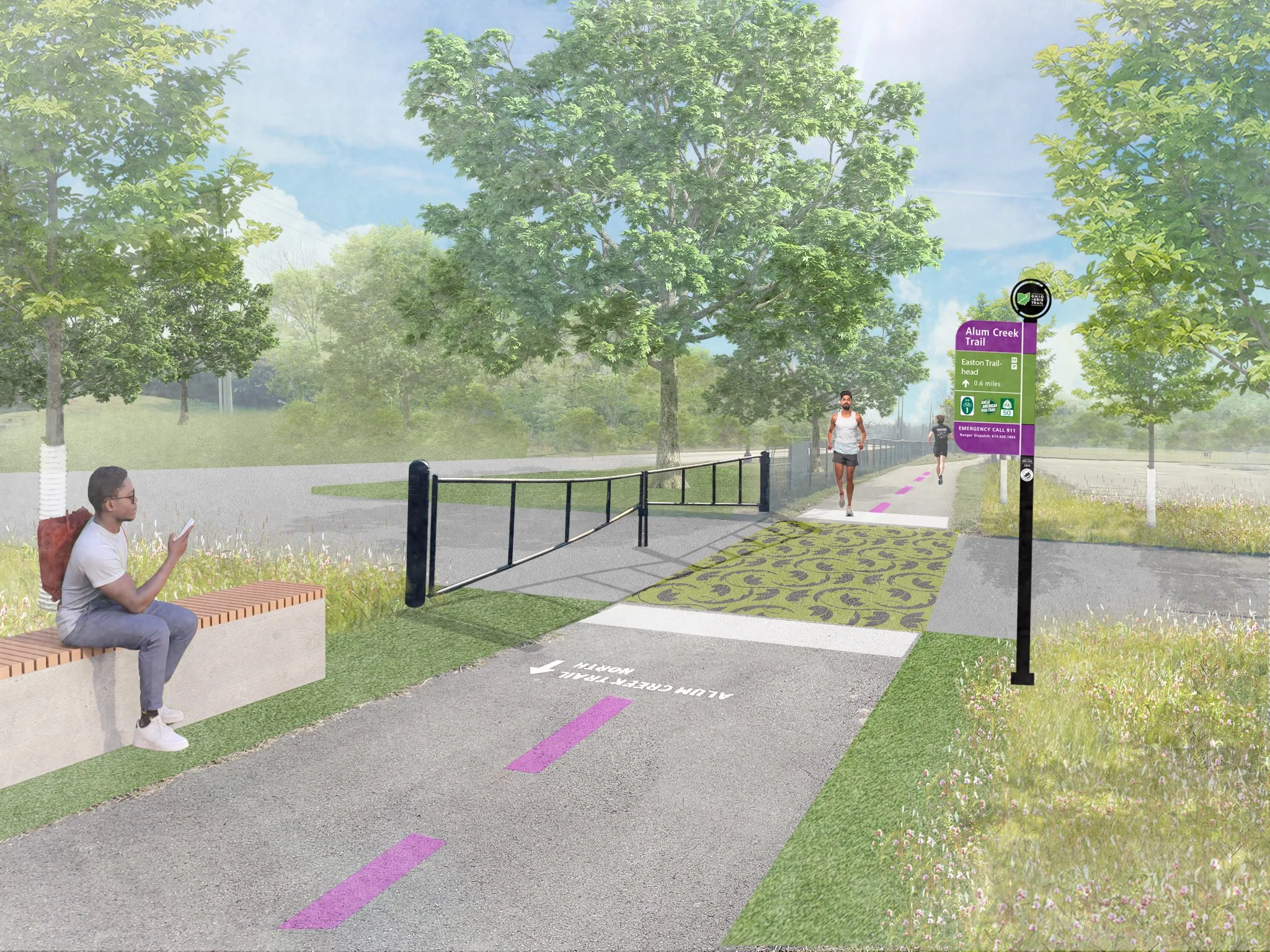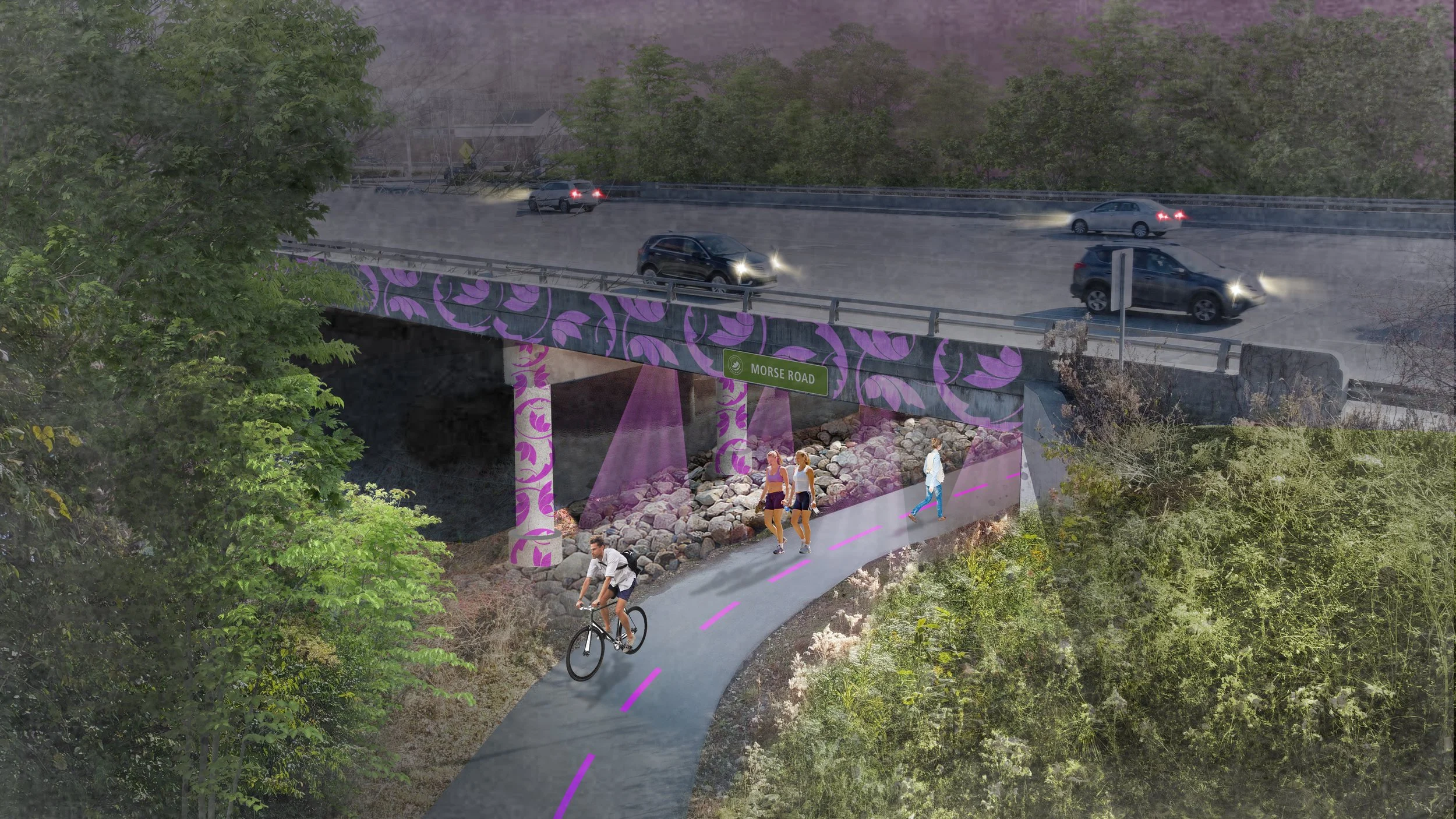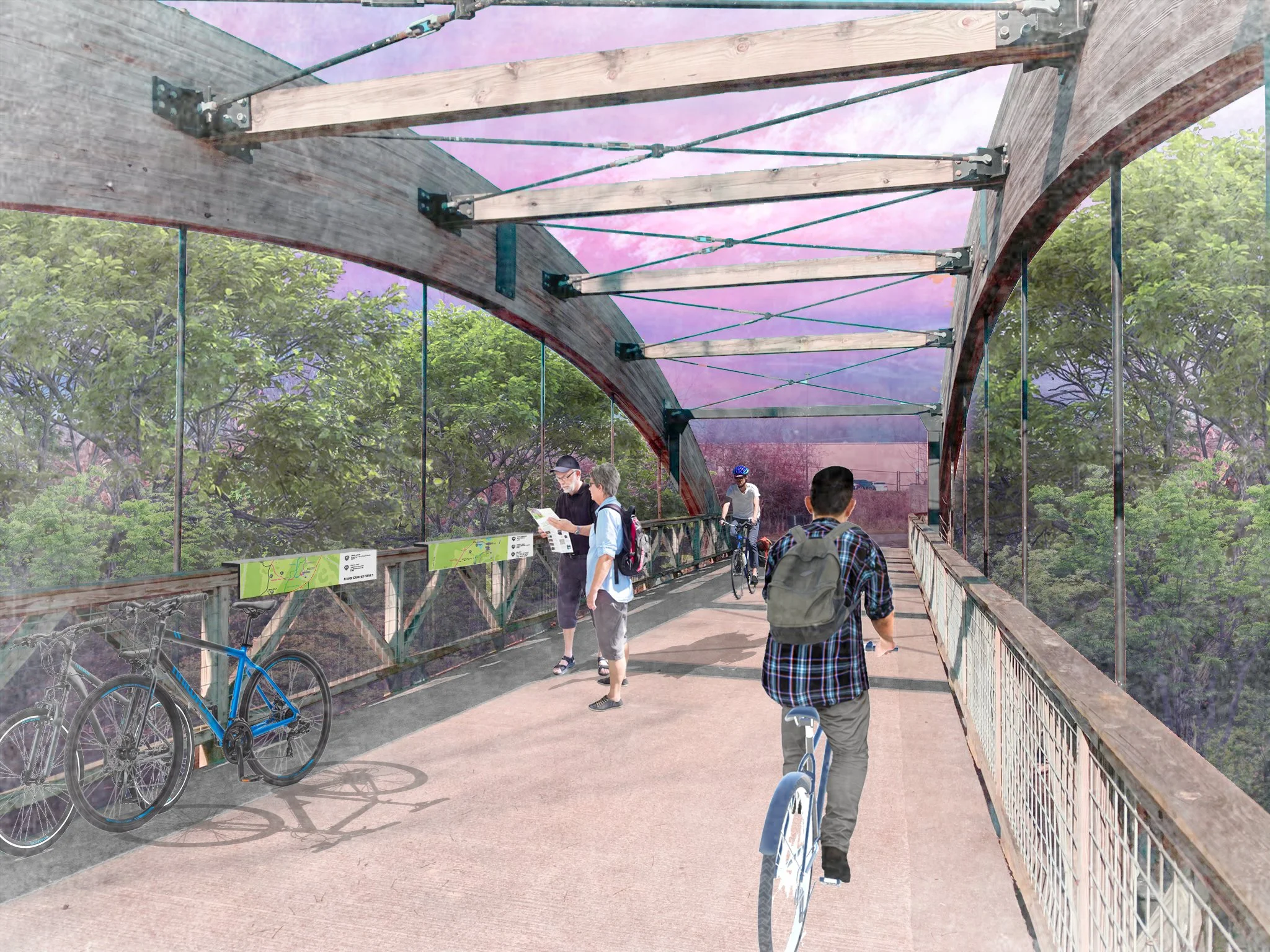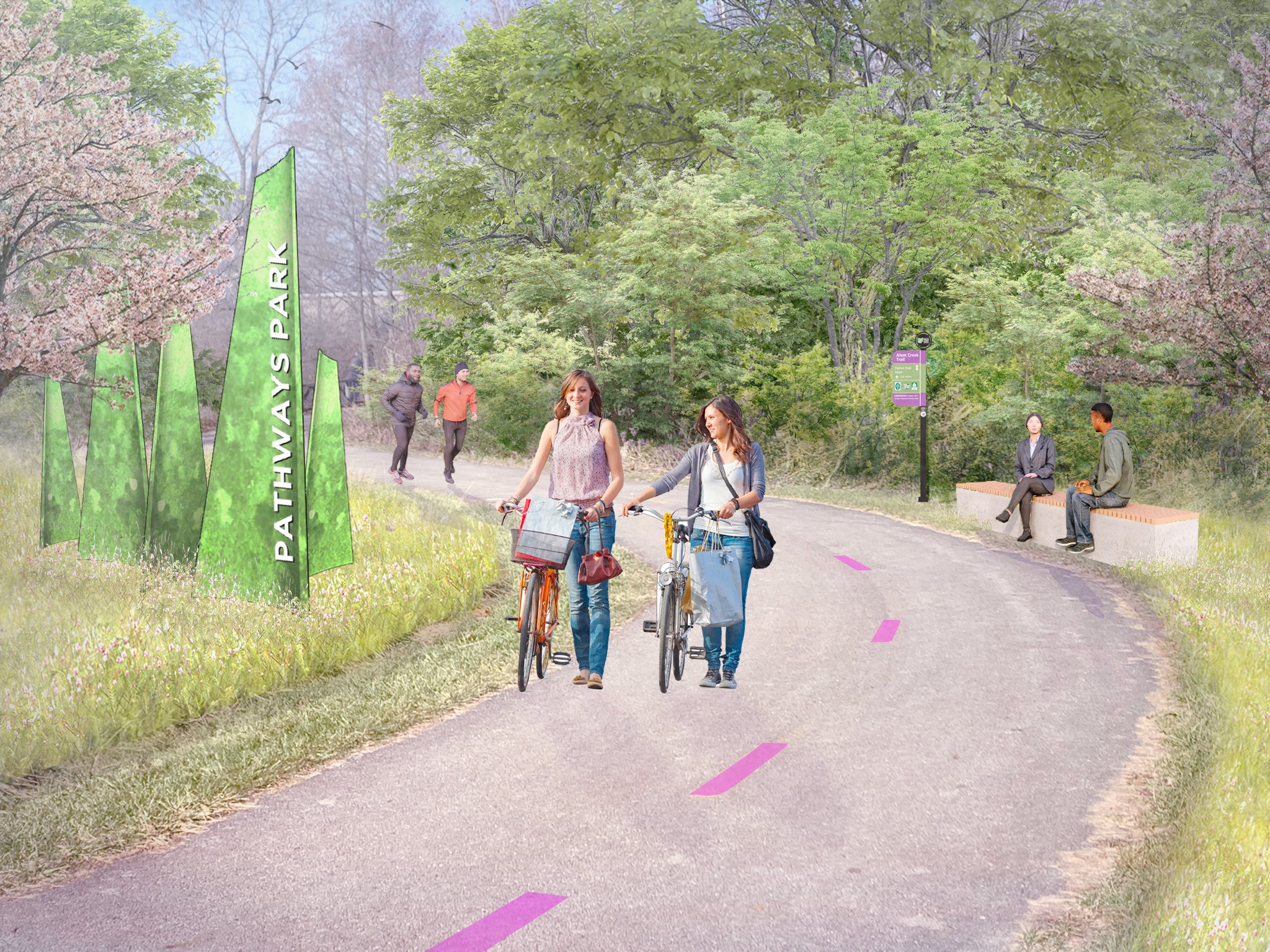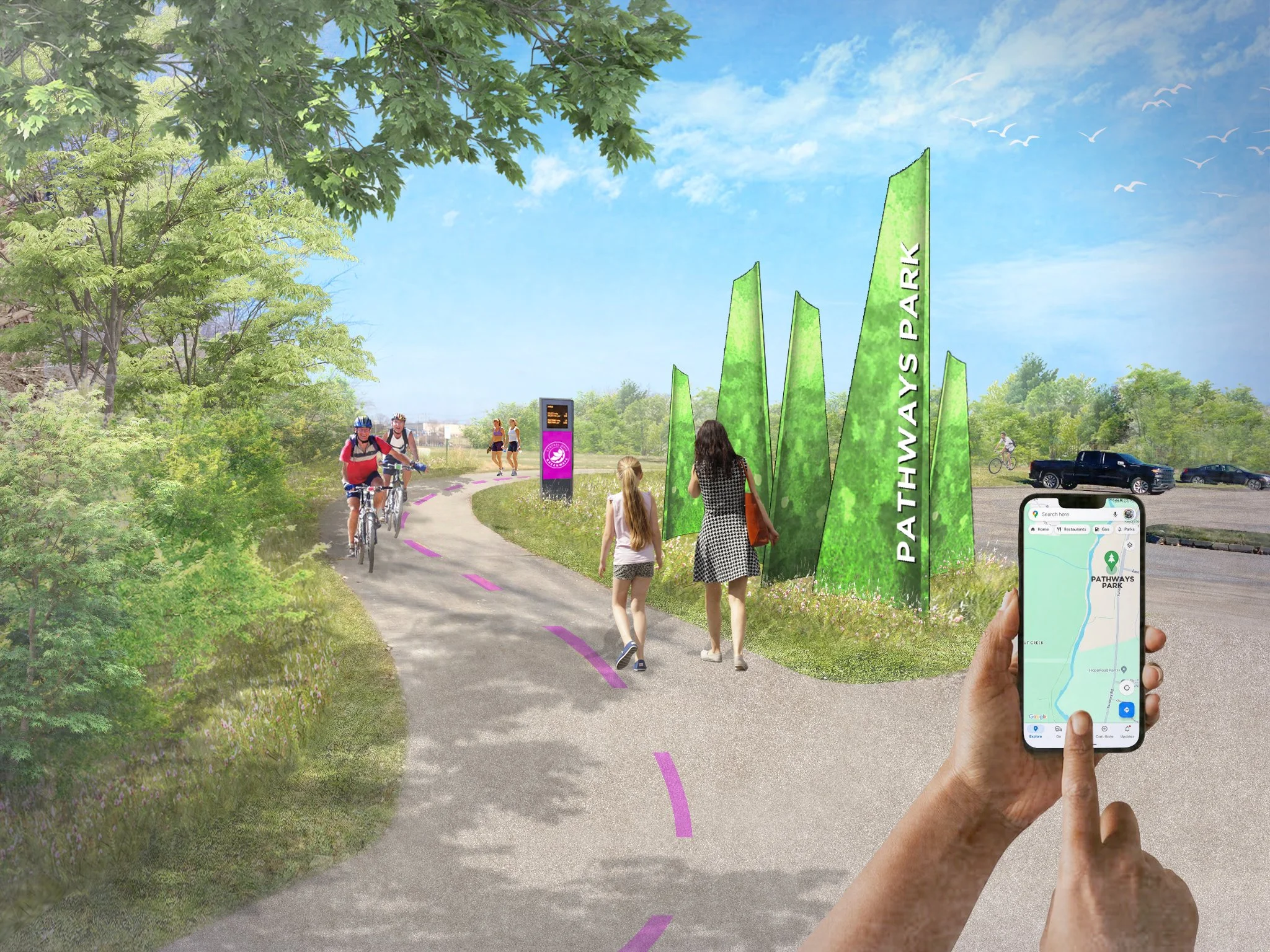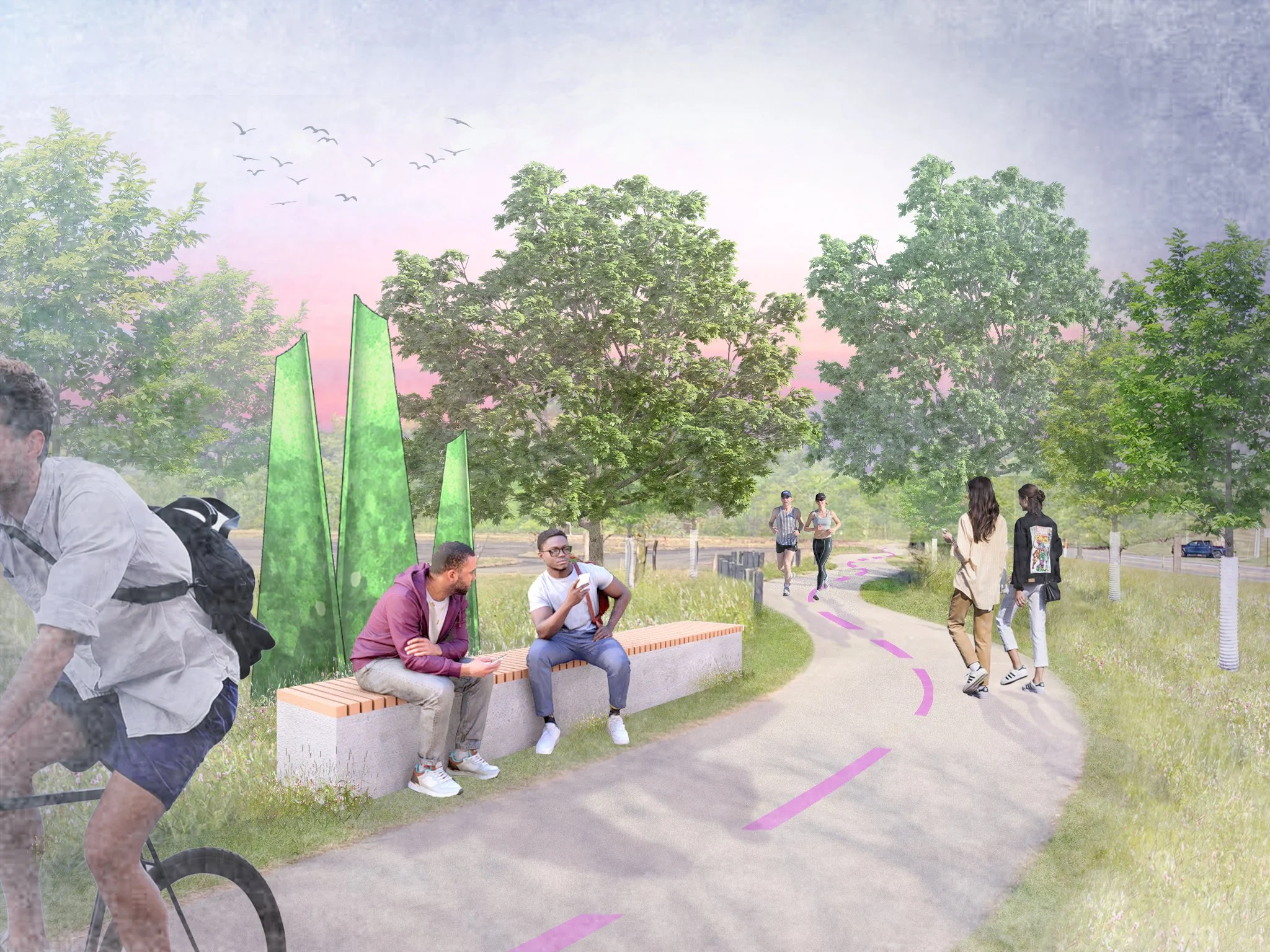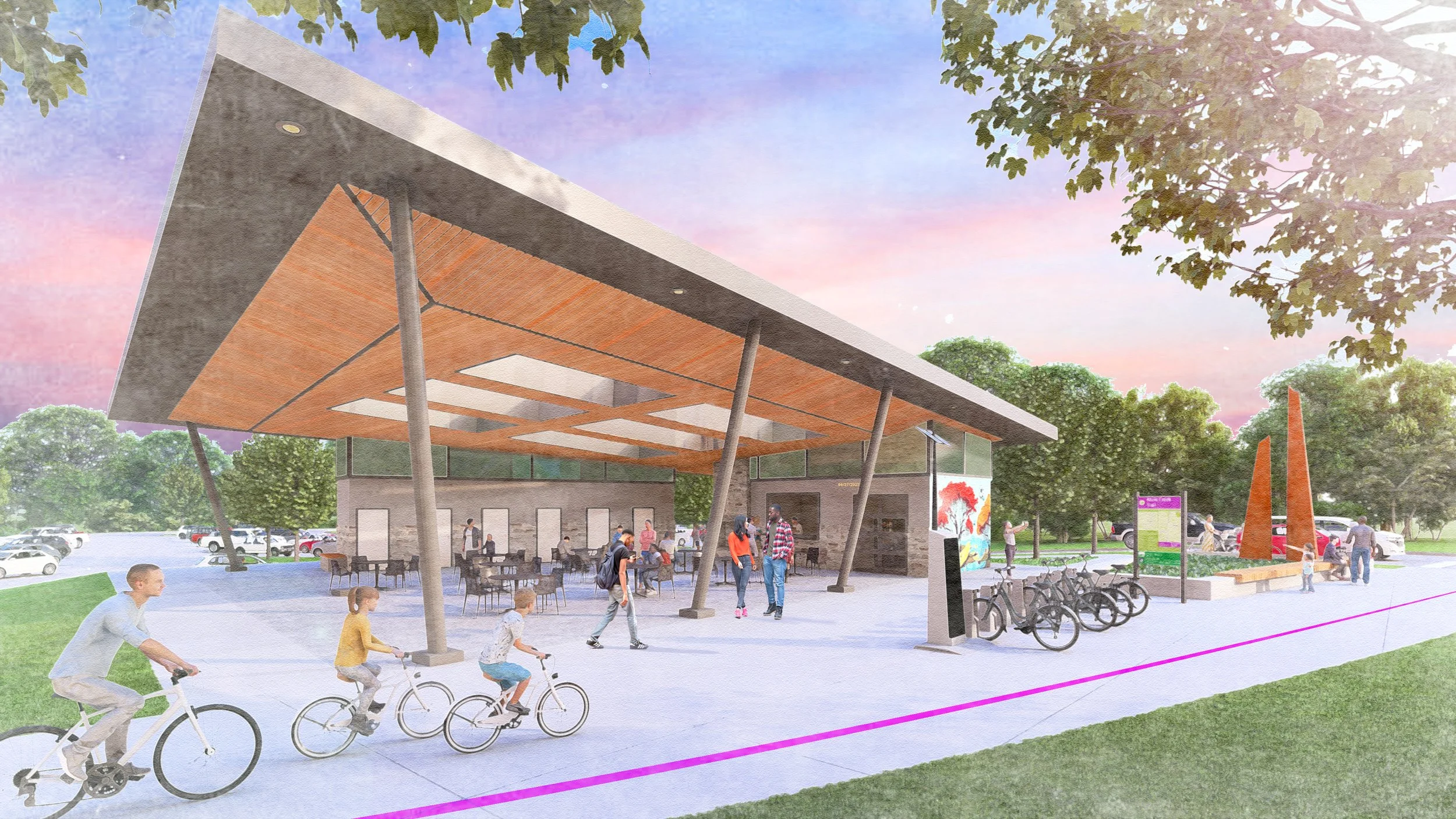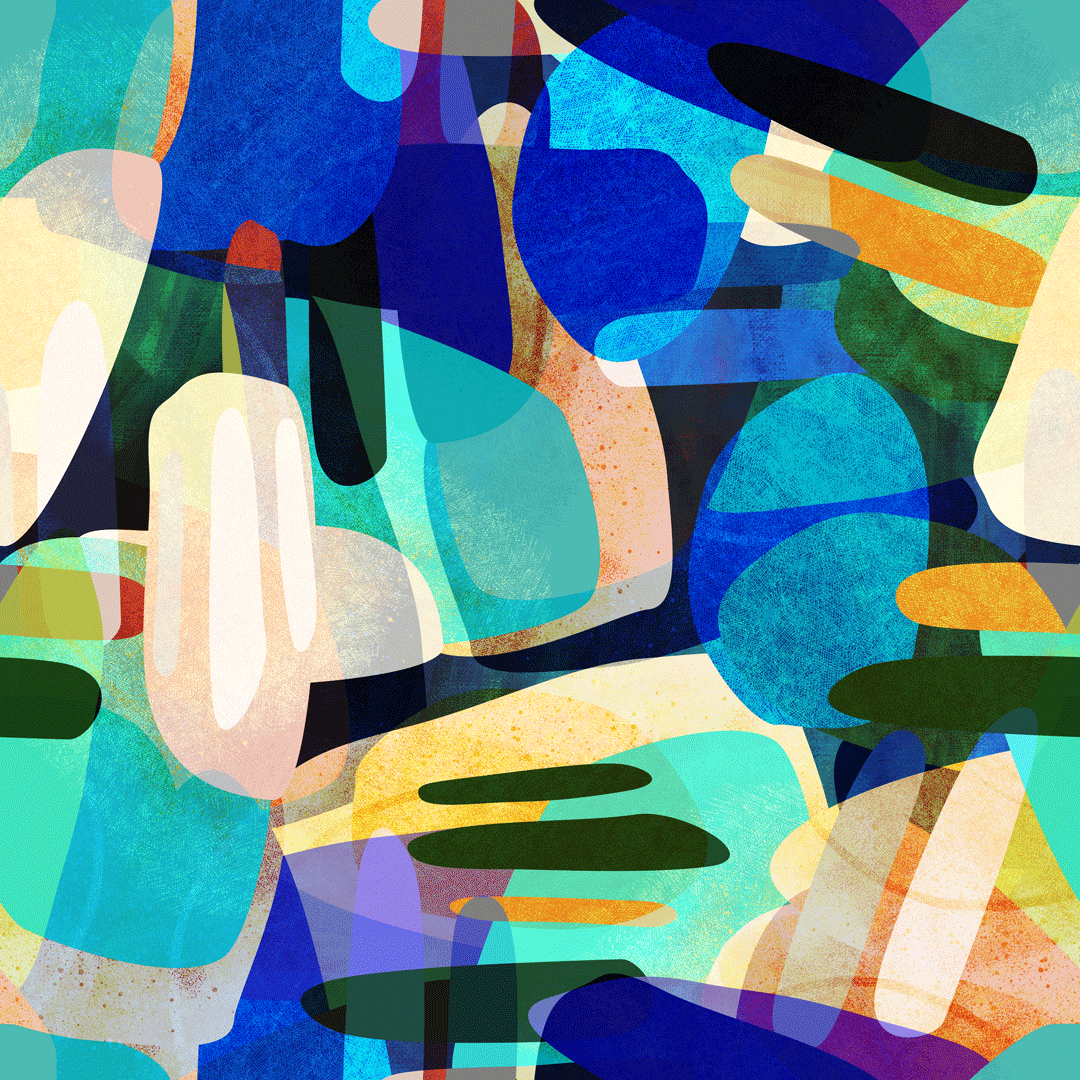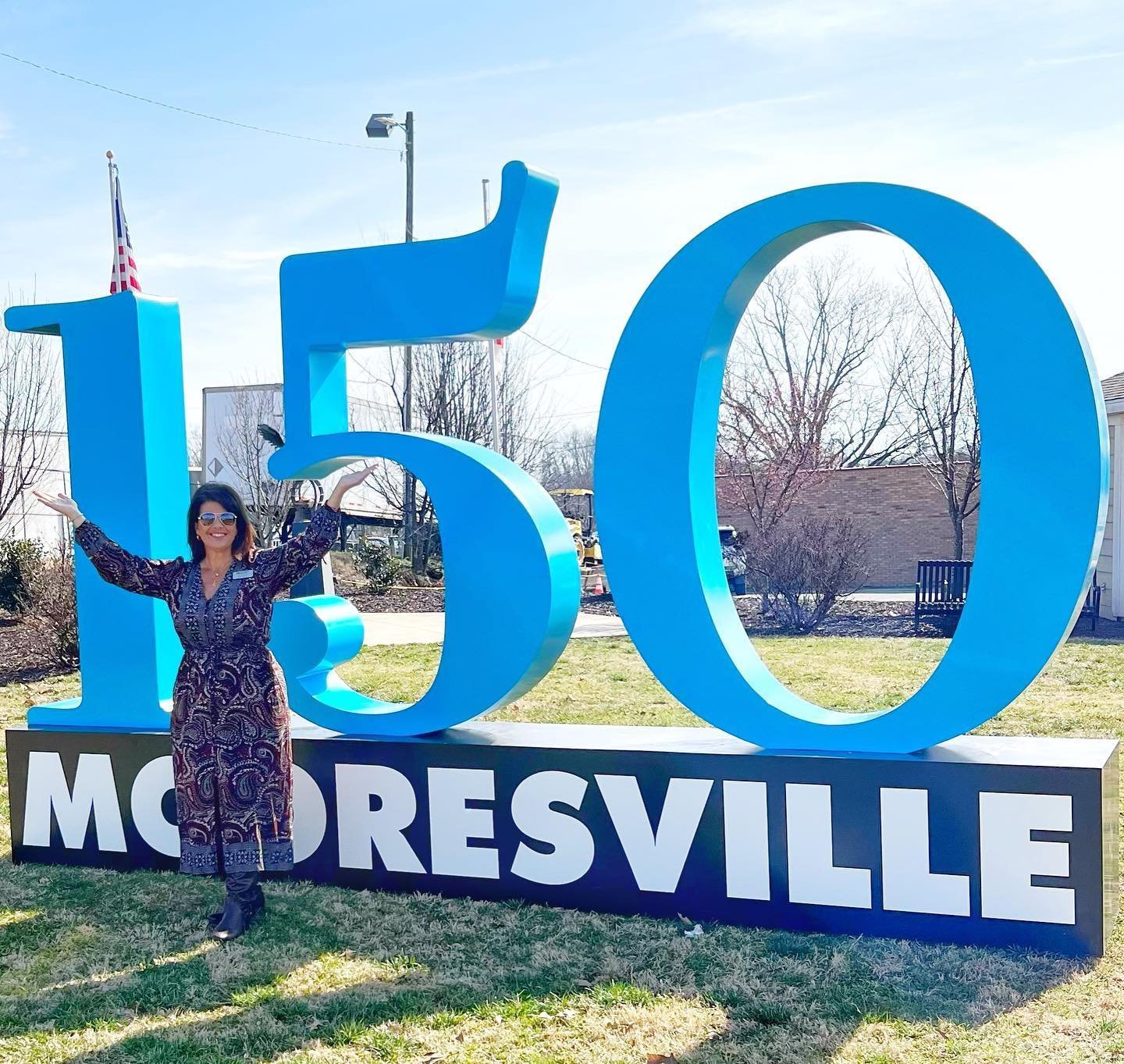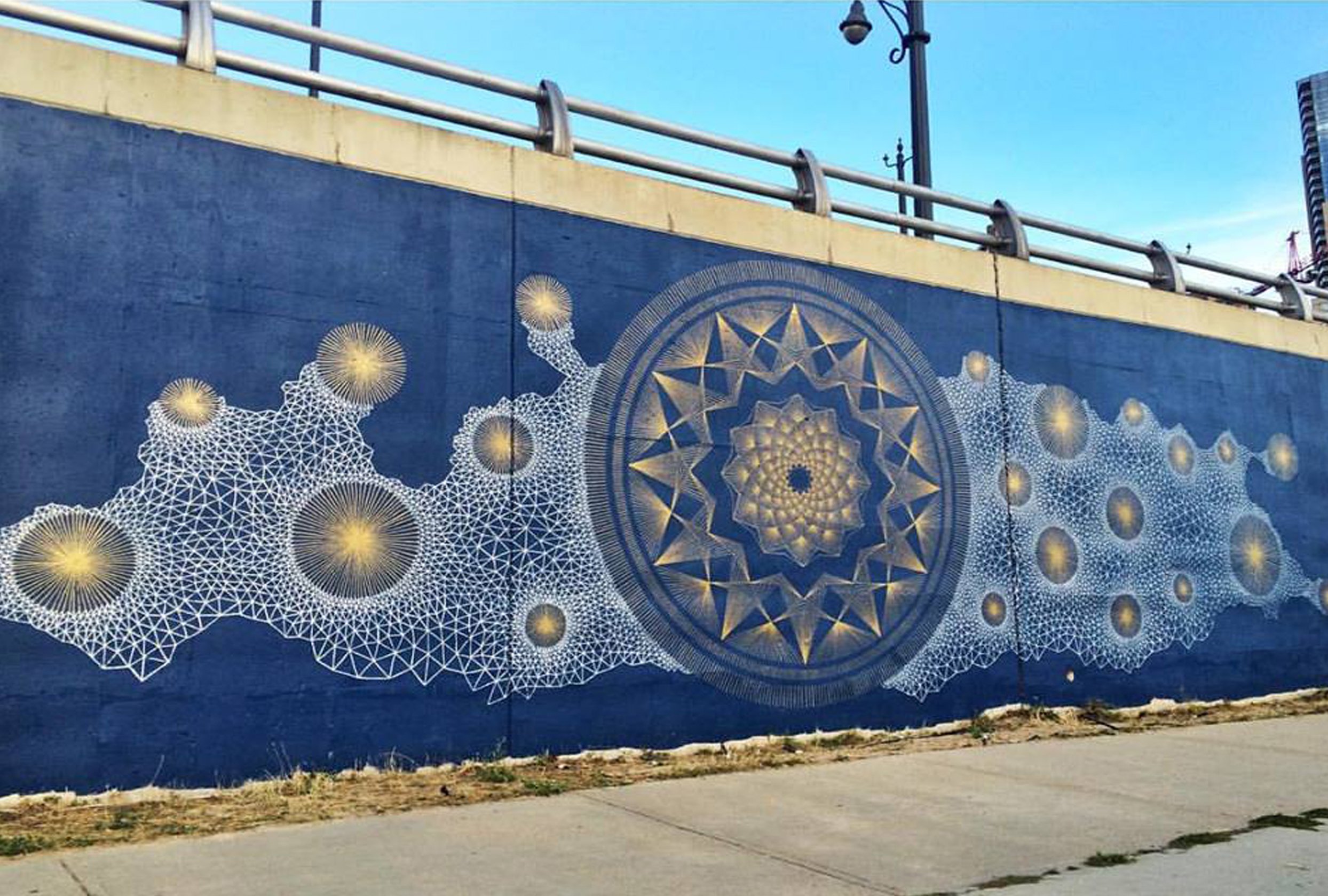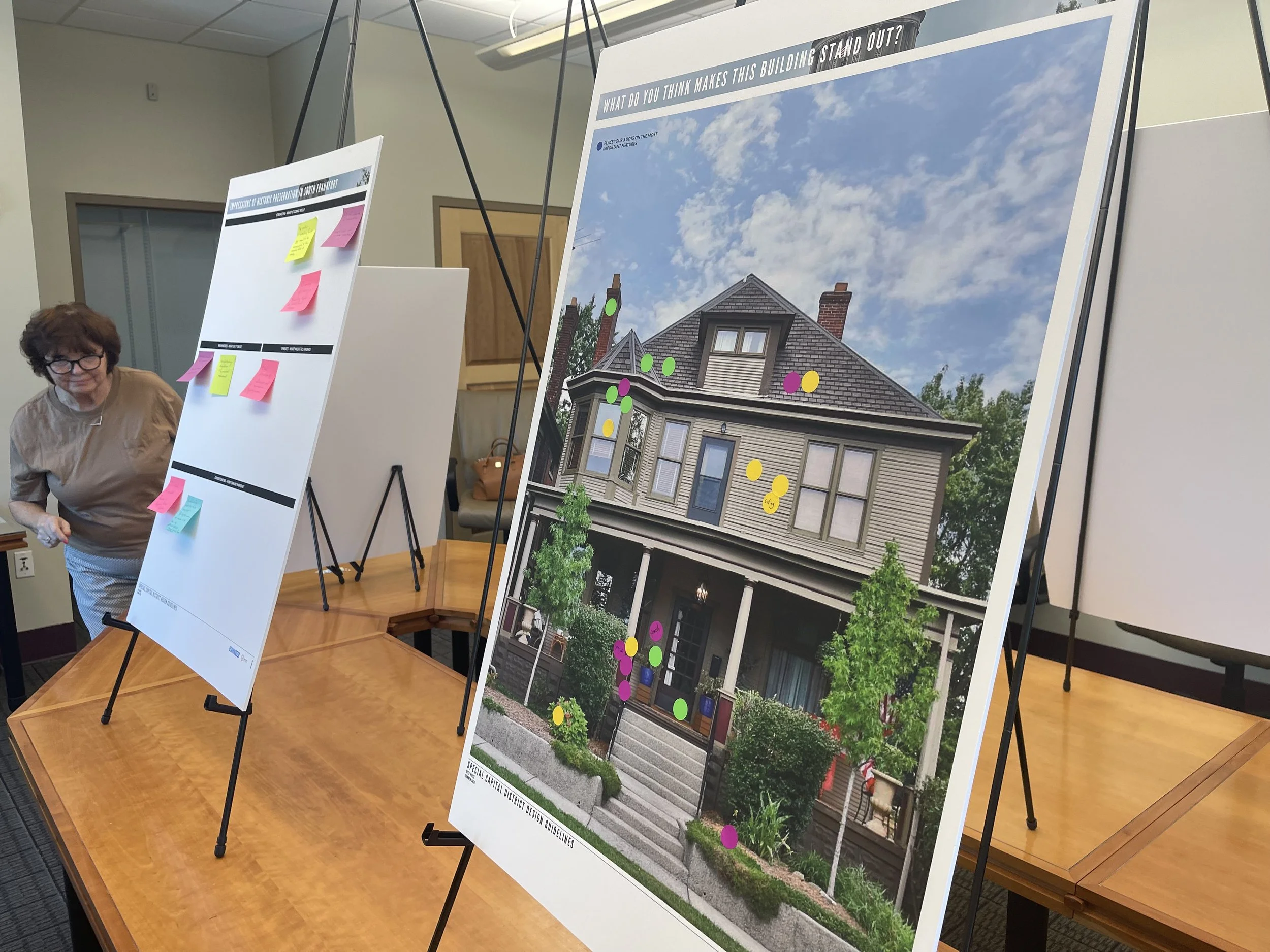Downtown Ormond Beach Master Arts Plan
Ormond Beach, Florida
WHY
The Ormond Beach Downtown Master Arts Plan is a comprehensive plan that outlines strategies to integrate public art into key areas in its historic downtown, including parks, sidewalks, gateways, and the iconic Granada Bridge, enhancing the city's identity and elevating its appeal for residents and visitors alike. With input from community members, stakeholders, and experts, the plan emphasizes art that reflects Ormond Beach's coastal beauty, rich history, and small-town charm, while fostering inclusivity and accessibility for all.
HOW
Through detailed recommendations based on extensive community input, the plan introduces innovative public art typologies such as mosaics, sculptures, light installations, and environmental art, alongside functional art like artist-designed benches and planters. It also provides actionable steps for implementation, including funding strategies, artist selection processes, and maintenance guidelines to ensure the longevity of the projects. Special focus is given to the Granada Bridge, with proposals for transformative art installations that symbolize the city's character and connect its downtown and beachside districts. Designing Local collaborated closely with the Florida Department of Transportation to understand opportunities and key regulations surrounding public art implementation on the state-owned Granada Bridge.
WHAT
The Downtown Master Arts Plan is a call to action for Ormond Beach to embrace its cultural assets and create lasting experiences that inspire pride and spark conversation. By leveraging community input, strategic partnerships, and sustainable funding mechanisms, the plan positions Downtown Ormond Beach, a Community Redevelopment Area established in 1984, as a destination for art, culture, and innovation, ensuring its legacy as a vibrant and welcoming city for generations to come.
Milpitas Public Art Plan
Milpitas, California
WHY
The Milpitas Public Art Master Plan outlines a 10 year vision for public art as a dynamic and inclusive force that fosters belonging, reflects the city’s diversity, and enhances residents’ quality of life. Strategic recommendations emphasize community-centric, accessible art that resonates with Milpitas’ diverse population, including bilingual signage, and a Public Art Field Guide. As Milpitas looks to the future, Milpitas is also in a distinct moment in its history. The City’s population has become increasingly diverse with each generation, and will continue to embrace neighbors from around the world. Public art is not only a powerful mechanism for bridging the past and the future, but also it is an essential part of connecting residents with each other across language or cultural divides. Through its beloved parks, civic amenities, and other public spaces, Milpitas’ public art will convey that all are welcome—and belong.
HOW
In addition to Designing Local’s community-oriented approach to gathering public input for the plan, Designing Local hosted two artist-led engagement events. Edi Hsu and Saranya Chandrasekaran each lead community art making projects that yielded productive conversation with the community during the City’s Lantern Festival in September 2024 and the Holi Festival in March 2025. Additionally, Designing Local worked with ACT Art Conservation to develop a collection assessment report on the overall condition of objects in Milpitas’ public art collection. An updated appraisal report, created by Roth Art Group, was included in the scope as well.
WHAT
The plan advocates balancing tradition and innovation to engage a STEM-focused community while maintaining relevance. Sustainable funding mechanisms are recommended, including increasing the developer fee from 0.5% to 1.5% or higher, alongside clear policies for collection care and maintenance. Additionally, the plan encourages community art-making projects, partnerships with public and private entities, and enhanced accessibility through consistent signage and online resources. Public art was strategically recommended to be placed in high-traffic and gathering areas to maximize impact, with collaboration between city departments, developers, artists, and cultural organizations to expand reach. The Plan also included a collection assessment report, which was the City’s first ever comprehensive condition report for objects in its collection, and an appraisal report.
Loudoun County Comprehensive Arts Plan
Loudoun County, Virginia
WHY
The Loudoun County Comprehensive Arts Plan (CAP) presents a vision, goals, and strategies to develop and establish Loudoun County, Virginia as a thriving arts and culture destination within the state. The actionable strategies outlined in this plan include public art investments, strategic artist support; and diverse, arts-focused programming and facilities that enrich and contribute to the health and wellbeing of the community. With vital input gleaned from community members, stakeholders, and experts, the plan emphasizes art that reflects Loudoun County’s culturally rich heritage.
HOW
The proposals outlined in the CAP were developed directly from extensive community engagement that was conducted from Fall 2024 through Spring 2025. Engagement for the CAP was split into two phases: Setting the Baseline and Ideating on the Future.
Phase 1: Setting the Baseline - Designed to elicit a comprehensive understanding of the arts and culture amenities and resources available in Loudoun County, and the direction in which participants wanted to see it progress. It consisted of a public survey, which received over 1,100 responses, over 60 one-on-one stakeholder interviews, 12 focus groups, and tabling at community events.
Phase 2: Ideating on the Future - Offered the community opportunities to review the findings of Phase 1 and rank them. This consisted of 4 public meetings and 3 virtual meetings totaling over 150 attendees, as well as additional targeted outreach.
The ideas developed in Phase 1, which included concepts such as increasing publicity and marketing efforts around the arts, and creating more visual spaces for artists, were prioritized during Phase 2 and then narrowed down into 5 guiding principles. Engagement from both phases helped our team develop a concise vision for arts and culture in Loudoun County.
WHAT
The Loudoun County Comprehensive Arts Plan will invigorate Loudoun County’s Arts and Culture Programming by consistently helping to create engaging public art, elevate and promote the value of the arts, while also fostering it as an accessible and inclusive community. The CAP proposes more investments in arts education for all ages that instills the importance of the arts in day-to-day life, but also supports a range of affordable, quality facilities for both visual and performing artists to work on and share their craft. The CAP will help Loudoun County to integrate arts and culture further into its identity, through leveraging existing infrastructure, expertise, and community connections to maximize impact and efficiency. These strategies will help to facilitate seamless collaboration, expand public access to the arts, and ensure that cultural initiatives are woven into the fabric of the community.
Toledo Old West End Historic District Design Guidelines
Toledo, Ohio
WHY
These guidelines were developed to provide a more comprehensive and localized set of standards for the Old West End Historic District (OWE). While still based on the national Secretary of the Interior’s Standards for Rehabilitation, they incorporate specific guidance relevant to the unique characteristics of the OWE.
HOW
The process involved several steps: a kick-off tour and photography of the district for information gathering; bi-weekly coordination with City of Toledo staff and the Historic District Commission; conducting one-on-one discussions with diverse community stakeholders, including property owners, residents, the Lucas County Land Bank, and commission members, to understand existing regulations and preservation issues; and holding a public open house to allow residents to review the draft guidelines and provide feedback, which was then incorporated.
WHAT
Ultimately, this comprehensive assessment empowers the community to make informed decisions about the future preservation and revitalization of this treasured historic district.
Main Street Medina Tactical Public Art Strategy
Medina, Ohio
WHY
As the southern gateway into the Uptown Historic district, the South Town district in Medina serves as an important crossroads for tourism, economic development, culture, and community pride. The South Town district's history in multiple industries-including grain, freight railways, upholstery, metal smithing, marble, and beyond-contextualizes its placemaking and public art considerations. A cohesive public art strategy has the ability to define a place's borders and invite in residents and visitors.
HOW
Designing Local created a vision for the South Town district of Medina that celebrates its industrial past through innovative public art and lively placemaking, while establishing a natural connection between Medina's Uptown Historic and South Town districts.
WHAT
In order to most effectively implement goals defined in the first phase of this strategic plan, a framework of three approaches was developed. Each dynamic approach supports the goals of public art in South Town: activating shared spaces, revealing South Town's visual identity, and reinforcing the Court Street Corridor. While the recommended interventions are all achievable as stand-alone projects, their implementation will be more successful when aligned with this Plan's strategic approaches.
Acworth Public Art Master Plan
Acworth, Georgia
WHY
Acworth is a unique destination for work, play, and everything in between. With just over 22,000 residents and its proximity to metropolitan Atlanta, it is poised for continued growth in the next decade. As Acworth looks toward its future, the City believes in public art's ability to tell the story of Acworth, enliven public spaces, and reveal what makes this City special.
HOW
From large-scale, multi-year projects that define Acworth's gateways, to temporary, yet meaningful mural opportunities in Acworth's beloved greenspaces, this plan outlines a range of strategies for high-impact public art projects in Acworth.
WHAT
In addition to strategy recommendations, this plan provides guidelines for establishing the public art program in Acworth, administrative next steps and best practices, and strategies for effectively and efficiently implementing public art projects in Acworth.
Amherst Historic District Design Guidelines
Amherst, New Hampshire
WHY
These guidelines were created to provide clear direction for exterior work on historic buildings within the Amherst Village Historic District. The primary goal was to transition the existing, mostly textual guidelines into a visual document as well as to ensure that the guidelines were more easily digestible for everyday homeowners.
HOW
This project was a collaborative effort, supported by the Town of Amherst and the Amherst Village Historic District Commission, with partial funding from a Certified Local Government (CLG) grant.
WHAT
The final result was a comprehensive, practical resource that uses easy-to-read graphics and illustrations to describe historical context, prominent architectural styles, and specific instructions for various building elements. This ensures all new work is sensitive to the village's historic fabric, preserving its unique character and appearance.
Racine Riverfront Revitalization
Racine, Ohio
WHY
The Village of Racine seeks to revitalize their downtown area with riverfront access, improved walkability, and outdoor community gathering places. Racine leadership has sought for many years to increase access to their riverfront, but been stymied by regulations that restrict building along the Ohio River, and the expense of accommodating them.
HOW
The focus of this project is to create riverfront access at Star Mill Park that includes walking paths (connecting the riverfront park to the Cross Building a short distance away), a community amphitheater, a recreational boat dock and kayak launch. It further includes streetscape improvements along 3rd and Pearl Streets to facilitate the creation of an outdoor business district, the focal point of which will be a pavilion for farmer’s markets and musical performances, among other community events.
WHAT
This project will provide Racine citizens with opportunities for outdoor wellness activities, including walking and a farmer’s market, that promote active lifestyles and social interaction. The project is currently in design.
Marsh Park Master Plan
Fairfield, Ohio
WHY
Fairfield, Ohio first leased a portion of the Martin Marietta/Dravo Quarry for the Thomas O. Marsh Park property in 1978; since then, the park has grown to be 146 acres, including a 60-acre lake. Marsh Park serves as a crucial recreational area for the community, offering both passive natural elements and outdoor activities. In 2016, the City completed its first Master Plan for the site, which laid the foundation for future development and improvements. Fairfield’s City Council has continued to prioritize Marsh Park as a significant asset for the city, highlighting the property’s intrinsic value, natural beauty, and potential for development.
HOW
Designing Local offered planning solutions and visualizations, grounded in community feedback and technical analysis, that cast a compelling vision for what this park could become — a regional trail hub with expanded uses and access for both community members and trail travelers.
WHAT
In early 2025, Designing Local finalized an updated Marsh Park Master Plan that will further enhance the park’s natural environment, promote connections between the park and its users, foster community through events and programming, and provide access to amenities that encourage recreation.
Fairfield Town Center Placemaking Strategy
Fairfield, Ohio
WHY
The Fairfield Placemaking Strategy tackles the revitalization of the Fairfield Town Center. The Fairfield Placemaking Strategy was developed through a collaborative process involving community members, business owners, and local officials. The team conducted extensive research, including surveys, interviews, and site visits, to identify the unique assets and challenges of the Town Center.
HOW
Through the planning process Designing Local developed recommendations that focus on incorporating placemaking principles to cultivate a welcoming and lively atmosphere. This includes improvements to signage, pedestrian accessibility, and public spaces, along with considerations for infill development that aligns with the town’s brand identity.
WHAT
By implementing these suggestions, the Fairfield Town Center aspires to become a central point for commerce and a gathering place for residents of all ages and backgrounds. The plan was completed in April 2024. This project demonstrates Designing Local’s ability to provide a guide for transforming the area into the vibrant hub of the community.
Rickenbacker Woods Park
Columbus, Ohio
WHY
This project will create site development elements for the Rickenbacker Woods Foundation including various interpretive features and site infrastructure to support events, visitation, and other activities. The ‘Captain Edward V. Rickenbacker House’ is a National Historic Landmark, one of only three in Franklin County (Ohio Statehouse & Ohio Theatre). The site also honors Granville T. Woods, a world renowned African American scientist and inventor. He invented several items which allowed for safer electric railways and other public uses of electrical power. He is a member of the National Inventors Hall of fame.
HOW
The Rickenbacker Woods Foundation strives to ignite the spirit of innovation and perseverance embodied through the lives and legacies of Capt. Eddie Rickenbacker and Granville T. Woods. This new park project will transform an existing site to provide youth access to pathways, play area, interpretive features, landscaping and site elements.
WHAT
The project is currently in design.
Somerset Historic District Building Assessment
Somerset, Ohio
WHY
As a cornerstone of the community, Somerset’s historic district holds immense cultural and aesthetic value. The assessment report offers a captivating journey through time, revealing the stories embedded within its structures and will be a crucial step to preserve the unique character and rich history of Somerset.
HOW
By meticulously documenting the district’s buildings, the Designing Local team worked to develop a comprehensive review of the architectural gems nestled within this 170-acre area. From identifying significant architectural features to assessing the condition of each building, the report provides a detailed snapshot of the district’s current state. By uncovering the historical context of these structures, the report contributes to a deeper understanding and appreciation of Somerset’s past.
WHAT
Ultimately, this comprehensive assessment empowers the community to make informed decisions about the future preservation and revitalization of this treasured historic district.
Downtown Clyde Revitalization Plan
Clyde, Ohio
WHY
The City of Clyde has a historic Downtown area with numerous buildings and public spaces that contribute to the character of the city center. Recognizing the importance of a vibrant downtown to Clyde’s identity and economic well-being, this plan proposes a series of strategic initiatives aimed at boosting the area’s attractiveness and functionality.
HOW
The plan goes beyond aesthetics – it also explores strategies to attract new businesses, enhances existing public spaces, and cultivates a dynamic mix of retail, dining, and entertainment options. By ensuring a diverse and thriving downtown core, the plan aims to create a hub for community activity and economic growth.
WHAT
This comprehensive proposal provides a framework for Clyde residents to shape the future of their downtown. The plan encourages community participation, fostering a sense of ownership and ensuring the revitalization efforts reflect the unique character and aspirations of Clyde. By working together, this plan gives the community a vision for transforming downtown Clyde into a vibrant place that serves as a source of pride and a catalyst for further development.
Central Ohio Greenways Wayfinding Strategy Guide
Central Ohio
WHY
To accommodate the massive population growth expected in Central Ohio through 2050, the Central Ohio Greenways (COG) Board has committed to adding more than 500 miles of trails to its network. The Board has invested in professionally designed wayfinding signs and brand standards, but recognized a need to go further with its wayfinding strategy as it welcomes an influx of newcomers to the trails.
HOW
The COG Board selected for this project a segment of the Ohio to Erie Trail that runs through Madison County, Franklin County, Delaware County, and Knox County in Central Ohio. The intention is that the wayfinding strategy developed for this trail segment will be employed throughout the COG network and serve as a model for regional trail wayfinding across Ohio.
WHAT
The Central Ohio Greenways Wayfinding Strategy Guide will honor the wayfinding investments communities have already made and provide additional strategies to make Central Ohio’s trails as easy to navigate as our roadways.
Danville Arts & Culture Plan
Danville, Virginia
WHY
To build upon the creative energies in the City of Danville a 10-year strategic arts and culture plan to formalize and operationalize the people and organizations already doing arts and culture work in Danville. The plan includes a well-defined vision, analysis, and brand for publicly supported art of all kinds within the City of Danville. The plan is intentional in weaving more opportunities for residents and visitors to enjoy the arts and Danville’s culture.
HOW
35 leaders in the sector were interviewed about their vision for the Cultural Arts Program. Stakeholders included arts organization leadership, elected officials, city department heads, and local arts business owners. Focus groups were also held with arts leaders from various organizations. Members of the public were engaged in a number of activities, including sharing their ideas for arts and culture and considering public art types and locations. The public was also given the opportunity to contribute directly to a survey, which received 181 responses.
Strategies were defined to target the needs and desires of specific community profiles to provide city leadership with a roadmap for implementation that serves all creators, consumers, and advocates of arts and culture.
WHAT
While participants shared the overall quality of arts and culture in Danville was average, there was a hunger for more—specifically, live music and theater and community arts events and festivals and iconic public art. Through the implementation of the arts and cultural experiences outlined in the plan, Danville will have a roadmap for how to capitalize on their growing tourism market drawing visitors and artists from the region while supporting creatives and cultural organizers at the local level.
Woodstock Public Art Program
Woodstock, Georgia
WHY
In Woodstock, Public Art has the opportunity to capture public sentiments and community themes by bringing them into more compelling forms through artistic expression. Over the past decade, Woodstock has made tremendous progress in developing a city-wide collection of public art. Recognized widely for its downtown and distinctive approach to planning and development, By formalizing a city-run public art program, Woodstock will be able to recommit to its concentration on arts and culture as a method for furthering economic development as outlined in the 2018 Economic Development Plan adopted by City Council.
HOW
Through Public art, Woodstock can honor city history, values, and identity in a way that enhances and creates vibrancy for its residents and visitors. Public art in Woodstock has the potential to transform the everyday city fabric into well-loved and cherished public and private spaces. The Woodstock Public Art Program envisions a vibrant and enriching public art landscape that reflects the city’s unique heritage, values, and aspirations. Through a collaborative process that empowers artists, engages residents, and celebrates diverse perspectives.
WHAT
This Public Art Program is a fulfillment of the vision to establish a public art program as part of the 2018 plan. The Public Art Program will also serve to strengthen the relationship between the City and organizations such as Visit Woodstock GA and Woodstock Arts, both unique drivers and deliverers of the high quality of life in Woodstock. Finally, the public art program was developed to assist the City of Woodstock in understanding and navigating a growing arts space and visual identity, providing guidance on administration, policy, and procedures, and ultimately a suite of ideas that will catapult the city into the next phase of its public art journey.
Queen Creek Arts & Placemaking Plan
Queen Creek, Arizona
WHY
Queen Creek, located in the southeastern region of Arizona, has a rich and vibrant history that stretches back to its earliest inhabitants, the Hohokam people. The Downtown Queen Creek Art and Placemaking Plan aims to give the Town of Queen Creek the tools to transform the built environment of the Downtown area using public art and placemaking. Queen Creek is well known for its agricultural legacy that continues to the present day. Art and placemaking will continue to connect and celebrate that legacy, cementing the identity of the community in the eyes of residents and visitors.
HOW
Our vision is for public art and placemaking to transform Downtown Queen Creek into an interactive, unique, and vibrant community center. Art and placemaking features encourage residents and visitors to get out and explore the community on two feet or two wheels. These features create destinations and interest in the built environment. Queen Creek is well known for its agricultural legacy that continues to the present day. Art and placemaking could continue to connect and celebrate that legacy, cementing the identity of the community in the eyes of residents and visitors.
WHAT
The Arts and Placemaking Plan creates a vision for transforming Downtown Queen Creek into an interactive, unique, and vibrant community center. As many venues are outside of the Downtown Core, specific focus was on recommendations that contribute to Queen Creek's agritainment identity. Connect to and display our natural environment. As a community with a rich history but also a dynamic future, art and placemaking elements can build upon and deepen the story of Queen Creek for residents and visitors.
Richmond International Airport Public Art Plan
Richmond, Virginia
WHY
The Art in the Airport program at Richmond International Airport (RIC) strives to complement and promote the dynamic regional culture of the State of Virginia, with an emphasis on the Richmond Metropolitan area, while reinforcing the image of RIC as an inclusive and welcoming gateway to the world. The three main objectives are to enhance the air travel experience of RIC visitors by creating an ambiance in the airport that reflects the sophistication and cultural diversity of the region and supports local artists and institutions by creating and managing rotating exhibitions, fine and performing art series that are customized for RIC.
HOW
Designing Local was selected to bring our unique set of skills, professional experience, and insight in the development of the Art in the Airport program at RIC. Engaging the community, art and artists, and our proven ability to develop a multi-cultural art program has been critical in the development and coordination of this arts program. Designing Local facilitated a series of highly interactive and inclusive public workshops and stakeholder meetings that yielded essential insights to craft a narrative about RIC and articulate the culture and values of the community.
WHAT
The final plan includes a fully developed arts program, including master planning, commission management, and art curation. Potential locations for art placement were identified, while taking into consideration the existing airport design, maintenance, RIC Master Plan, and the Capital Improvement Plan. Designing Local is also curating RIC's first public art piece to be installed in Fall of 2024.
Mooresville Public Arts Plan
Mooresville, North Carolina
WHY
As the fastest growing town in North Carolina, Mooresville is a vibrant community that is poised to become THE place to live, work, and play in the greater Charlotte region. Mooresville sought to develop its first Public Arts Plan to help guide the Town as it seeks to enhance economic health and quality of life through public art. Mooresville also wanted to ensure that public input was at the heart of its Public Art Plan. In order to ensure that the strategy is built upon a solid foundation of community support the planning team engaged with community members and key stakeholders through a variety of mediums.
HOW
The process began in early 2023 with regular coordination with the project team and one-on-one conversations with key stakeholders. This initial coordination laid the groundwork for online and in person public engagement. The planning team also undertook an intensive on-the-ground tour of Mooresville to gain a greater understanding of the opportunity for public art in the town. What emerged from this process was a strong vision for how public art could create positive impacts in the community, bring people together, and align with other efforts undertaken by the Town.
WHAT
For Mooresville, the first Public Arts Plan is a blueprint for weaving public art into every facet of the community. With each new installation, Mooresville has the opportunity to create something iconic, that serves the community by enhancing the built environment in such a way that businesses, tourists, and residents are attracted to the area. The strategies in the Public Arts Plan also address the potential to revitalize overlooked spaces, inspire new investment, and support the local economy by creating a distinct sense of place.
Frankfort Special Capital Zoning District Design Guidelines
Frankfort, Kentucky
WHY
The Special Capital District is one of the three City of Frankfort historic districts, mostly focused on residential properties. The District exists to help preserve historic buildings in the neighborhood to ensure that the history of Frankfort lives on well into the future. Establishing Downtown Historic District Design Guidelines will encourage the renovation, rehabilitation and preservation of older neighborhoods in Frankfort that have special or unique features or important associations with the City’s historical development.
HOW
The team evaluated the existing historic buildings in the district and examined the needs and desires of residents and property owners through engagement sessions and public design workshops. Topics addressed included the renovation of historic properties, including construction materials, as well as the design of newly constructed buildings.
WHAT
The new design guidelines for the Special Capital District create cohesive guidelines with the other two historic districts in Frankfort and solidify continued preservation and investment in the community’s historic resources.
